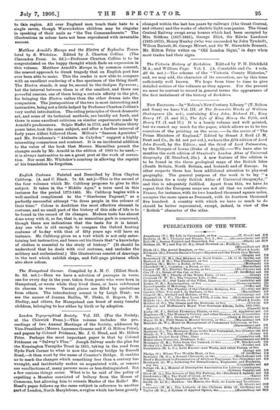English Costume. Painted and Described by Dion Clayton Calthrop. (A.
and C. Black. 7s. 6d. net.)—This is the second of the four volumes which Mr. Calthrop proposes to give to this subject. It takes in the "Middle Ages," a term used in this instance for the period 1272-1485. Mr. Calthrop begins with a well-merited compliment to the " Sherborne Pageant," as a perfectly successful attempt "to dress people in the colours of their time." Colour is doubtless the most effective element in costume, and no small part of the history of this side of life is to be found in the record of its changes. Modern taste has almost done away with it, so far, that is, as masculine garb is concerned, though there are indications that the taste for it is latent. Any one who is old enough to compare the Oxford boating costume of to-day with that of fifty years ago will have an instance. Mr. Calthrop gives us a text which is not only enter- taining but instructive, and bears out his thesis that "a knowledge of clothes is essential to the study of history." (It should be understood that he deals with civi/ costume, and excludes the military and ecclesiastical.) His illustrations consist of drawings in the text which exhibit shape, and full-page pictures which also show colour.


















































 Previous page
Previous page